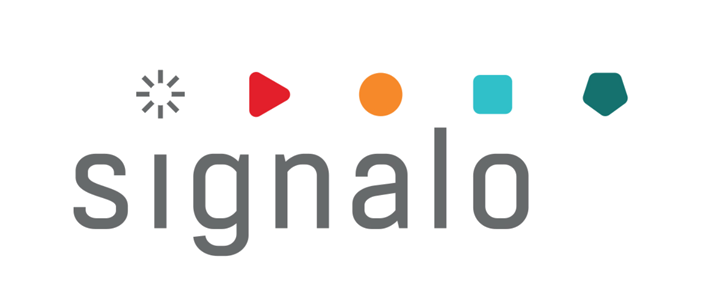In the ever-evolving business landscape, terms like digitalization and digitization often pop up, leading to confusion. Are they the same? Are they interchangeable? Not quite! Understanding the distinction between digitalization vs digitization is crucial for organizations aiming to thrive in the digital age. So, grab a coffee, and let’s dive deep into this intriguing topic!
What Is Digitization?
Defining Digitization
At its core, digitization refers to the process of converting analog information into a digital format. Think about it like turning a handwritten document into a PDF. It’s a straightforward transformation that involves taking something physical and making it virtual. This shift is often the first step toward harnessing the power of technology.
The Benefits of Digitization
- Efficiency: By converting paper documents into digital files, businesses can save time and reduce the clutter of physical storage.
- Accessibility: Digital documents can be accessed from anywhere, allowing teams to collaborate seamlessly, regardless of their location.
- Cost Savings: Reducing paper usage leads to significant savings in printing and storage costs.
Real-World Applications
Consider a small marketing agency. By digitizing client contracts and proposals, they streamline the onboarding process, making it quicker and more efficient. No more rummaging through files or chasing down paper documents!
What Is Digitalization?
Defining Digitalization
Now, let’s take it a step further. Digitalization involves using digital technologies to transform business processes, models, and customer experiences. It’s not just about making things digital; it’s about enhancing operations and creating value through technology.
The Benefits of Digitalization
- Enhanced Customer Experience: Digitalization enables businesses to offer personalized experiences, such as targeted marketing based on customer behavior.
- Agility and Adaptability: Companies that embrace digitalization can quickly adapt to market changes and customer demands.
- Data-Driven Decision Making: With the data collected through digital processes, organizations can make informed decisions that drive growth.
Real-World Applications
Let’s revisit our marketing agency. Instead of merely digitizing contracts, they implement a customer relationship management (CRM) system to track client interactions, streamline project management, and analyze campaign performance. This shift not only improves efficiency but also enhances client satisfaction.
The Key Differences Between Digitalization and Digitization
Understanding the Distinction
While digitization is a vital component of digital transformation, digitalization encompasses a broader scope. In simple terms:
- Digitization = Converting analog to digital.
- Digitalization = Leveraging digital technologies to improve business processes.
Why It Matters
Understanding the difference is crucial for businesses looking to innovate. Focusing solely on digitization may lead to missed opportunities for deeper transformation. Without digitalization, companies may find themselves stuck in a cycle of merely converting old processes into new formats without any real improvement.
Challenges of Digitalization and Digitization
Common Hurdles
While both digitization and digitalization offer immense benefits, they also come with challenges. Here are some hurdles businesses may face:
- Resistance to Change: Employees may resist new technologies, fearing job loss or increased workloads.
- Security Concerns: Transitioning to digital formats raises questions about data security and privacy.
- Integration Issues: Merging new digital processes with existing systems can be tricky and may require substantial investment.
Tips for Successful Digitalization
Best Practices to Consider
- Start Small: Begin with a pilot project to test the waters before rolling out changes across the organization.
- Engage Employees: Foster a culture of innovation by involving employees in the digital transformation process.
- Invest in Training: Equip your team with the skills necessary to navigate new technologies confidently.
Conclusion
In the debate of digitalization vs digitization, it’s clear that both play vital roles in modern business. Digitization sets the stage by converting analog data into digital formats, while digitalization takes it a step further, creating value and enhancing processes through technology. As businesses continue to evolve in the digital age, understanding and effectively implementing both strategies will be key to staying competitive.
Download Our Checklist!
Don’t miss the opportunity to enhance your understanding of digitalization in your business! Download our file, “Assessing the Importance of Digitalization in Your Company’s Areas,” and discover key areas to focus on for successful digital transformation.

Values
Discover the benefits of collaboration
We offer a free consultation as the first step of collaboration, allowing you to familiarize yourself with our approach and verify our advisory competencies. This way, even before making a decision, you’ll feel that your situation and problem have been well understood, and the proposed solution will be optimally tailored to your company’s situation.
Our services (support) are included in a subscription, which does not generate hidden costs. The subscription-based billing allows for a significant reduction in the entry threshold into the system and enables immediate testing.
We are communicationally independent – we can develop our system without depending on the client’s IT department. We do not generate additional work for the client’s IT department. This way, we lower the implementation risk and associated costs. The possibility of quicker implementation of the solution results in faster return on investment.
Login to our applications is secured at a high level, characteristic of banking solutions. At the same time, the login process is intuitive. Your data is as secure as in a bank thanks to our system.
We offer multilingualism in our solutions through real-time translation—each employee operates applications in their native language. This enhances efficiency and reduces costs by expanding the potential labor market and eliminating the need to hire translators.
Our software features an interface optimized for quick, easy, and intuitive use, even by digitally excluded or poorly skilled employees. This means real-time savings in both time and training costs for your workforce in using the new software. The ability for rapid deployment of software for use results in a shorter transition/implementation period.

















